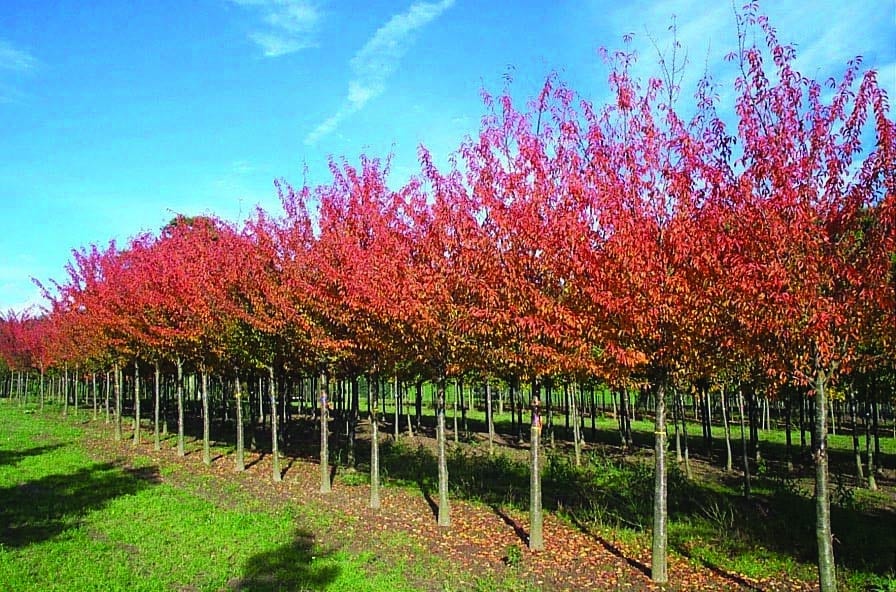Natural-shaped trees such as multi-stems, bush forms or windswept are becoming increasingly popular and it is easy to understand why. Often, site constraints — for example, within streets and car parks — mean trees are required to have a clear stem of at least 2 metres to maintain an open view. However, there are many occasions call for using multi-stem trees as the best plant for the job.
Instant Structural Impact
As they have several stems, multi-stems have the advantage of creating interesting structural forms that give much-needed interest at eye level. Planting species with amazing bark as multi-stems, maximises the effect. Multi-stemmed canopies are naturally fuller due to multiple stems. They create fabulous instant impact at sizes such as 3 – 3.5 m high, which are also fairly cost-effective.

An Architectural Showpiece
Multi-stemmed trees are very sought after due to their ornamental features, but they can also become an architectural showpiece. Multi-stem trees are often raised to showcase their stems or trunks effectively. These tall, elegant stems are often planted near hard surfaces to create a striking structural statement.

An Urban Glade
A single, well-selected multi-stem can have great presence and create a unique feature in front of a building or in a courtyard. In larger spaces, groups of multi-stems can be stategically employed, either in a formal manner to delineate a footpath, or in a more naturalistic approach to fashin a woodland glade.
Multi-stems planted with random spacing, along with groundcover plants or bulbs, suggest a woodland edge, creating a restful landscape in urban areas. Some designers are now creating larger tree spaces on streets, aiming to evoke a woodland feel in city centres using multi-stems.
s.

Best multi-stem trees for Bark
Many varieties of tree available as multi-stem offer fantastic interest from their bark. These are three of the best.
Prunus serrula
This has the most beautiful bark of any tree and it performs like a superstar all year round. Even on a damp and dull autumn day, the mahogany peeling bark catches your eye and draws you in. The stems shine and the peeling bark curls and stays on the stems taking on a deeper, richer tone that provides a fabulous contrast.
Betula utilis var. jacquemontii
Betula jacquemontii multi-stems, have an architecturally crisp look with their chalky white bark. This strong yet elegant tree deserves to be featured in the finest projects, where its beauty can be fully appreciated.
Betula nigra
The river birch with its fabulous, peeling bark is a real showstopper that will cope well with slightly damper conditions. The colour on the bark is very warm and ranges from pink to brown to orange hues and the attractive peeling bark remains on the trunk to give a unique textural look.

Fantastic Form, Flower and Autumn Colour
Multi-stems can form the most wonderful feature trees and create a memorable setting. The courtyard pictured here (designed by Sarah Price) uses the naturalistic and in this case rather quirky form of Amelanchier to create an interesting space which complements the building and hard landscaping. Every season brings highlights – in early spring, the stunning white flowers steal the show, while in summer, the emerging bronze foliage and lush green leaves take centre stage. Then, in autumn, it boasts one of the most exceptional displays of autumn colour. Amelanchier lamarckii is one of the hardest working, reliable and popular of all multi-stem trees.

Selecting Your Multi-stem
Many of the trees in the A-Z listing are available as a multi-stem. Look out for the multi-stem symbol or use the search filter.



